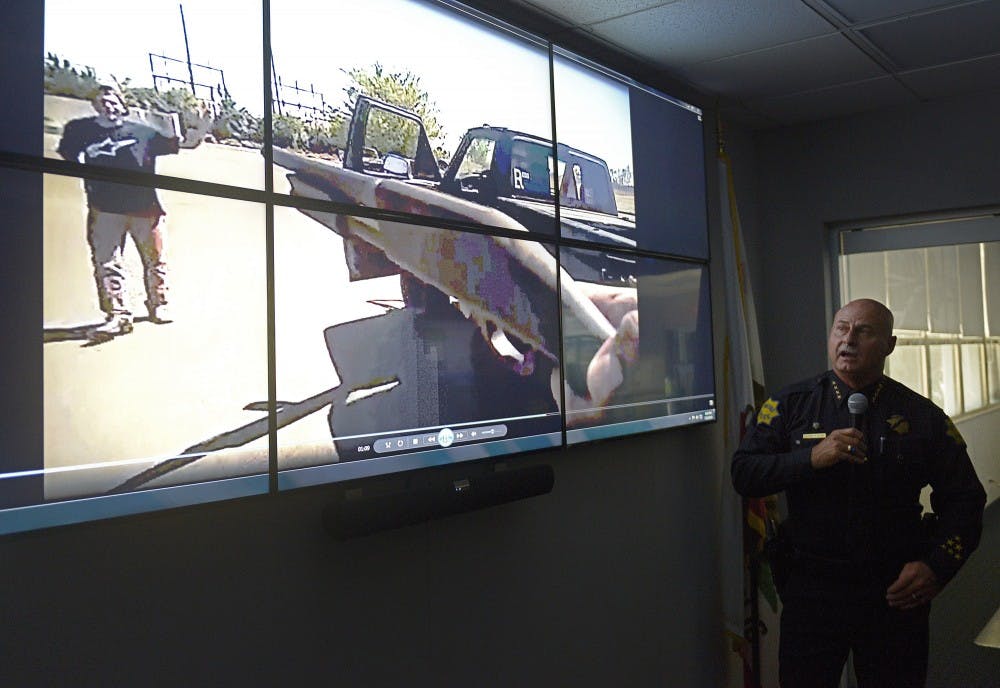After more than a year and a half of deliberation, the University Police Department has started using body cameras.
The decision comes at a time when many police departments are under scrutiny for brutality. People are watching police officers closely, and the body cameras help hold them and those they interact with accountable.
“It’s really transparent,” said UPD Chief James Duckham. “You can see what the officer did and didn’t do … I think we’re going to see that citizen and police interactions are most positive when people know it’s being recorded.”
UPD started using body cameras at the beginning of August, Duckham said, just before students came to campus. The department has been considering buying the cameras, which cost the more than $27,000, since early 2015.
Officers have begun getting used to the new technology, and Duckham said so far they are enjoying them. A UPD officer was not available to speak about their usage of body cameras.
“I think it’s a really good tool to have out there,” Duckham said. “It helps the officers, and it’s great for transparency.”
Whenever officers are engaged in official police business — like giving a ticket, performing a traffic stop or arresting someone — the camera is recording. If officers are stopping to chat with students or are engaged with community policing, then the camera will not be on.
UPD uses the Taser system, which is constantly recording, but is in a buffering mode. Once the officer activates the camera, it will record 30 seconds of video before the button was pushed without audio. From the time the officer activates the recording, both audio and video will be captured.
Ball State has 30 body cameras, and all officers wearing uniforms will also be wearing a camera. They’re the ones who have the most interaction with civilians, Duckham said, so it makes sense that they’re the ones who wear the cameras.
“I think it builds trust in the community,” Duckham said. “It’s such an effective tool for report writing, for maintaining an accurate tool of the entire start of the event from when the officer got there to the conclusion of the event.”
Snippets of cell phone video that may paint only 30 seconds of an incident that actually went on for seven or eight minutes are not as reliable as constant footage of the interaction, Duckham said.
Emily Trout, a junior elementary education major, said the cameras give officers protection from incidents, and should be beneficial for them.
"It's a good precaution to take, and it makes me feel a little safer," Trout said. "I haven't had any problems with UPD, but it offers protection to them and makes sure everything goes smoothly and that no one is lying."
It’s too soon to tell the real impact the cameras will have on the department, Duckham said, but he’s hopeful for the future.
Although some police departments in Indiana discontinued use of cameras after Indiana lawmakers passed a new law this year to regulate the use of cameras, Duckham said he didn’t think the law had an impact one way or the other.
At least two departments in Southern Indiana suspended their programs because they couldn’t pay for the storage space the new law required to store footage, according to the Indy Star.
Even so, many departments are still bringing cameras into the force, especially on college campuses.
Indiana University and IUPUI decided to implement them this year, and are in the process of ordering them. But Indiana State University and Butler University police already have body cameras.
“Ultimately, we’re going to see it nationwide that most police officers are wearing body cameras,” Duckham said.





